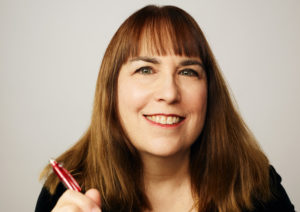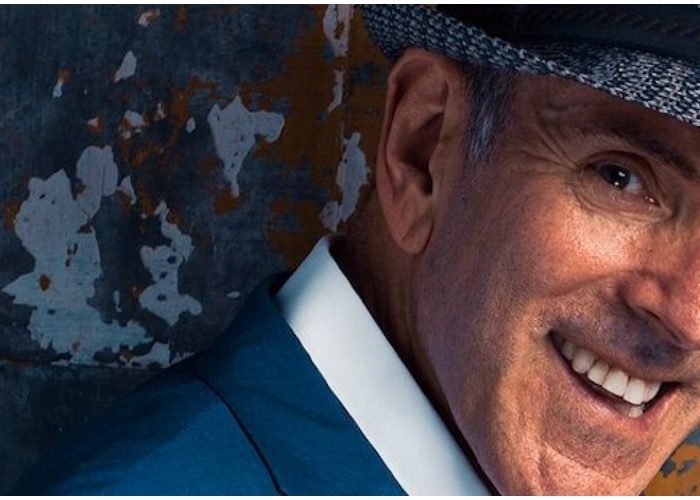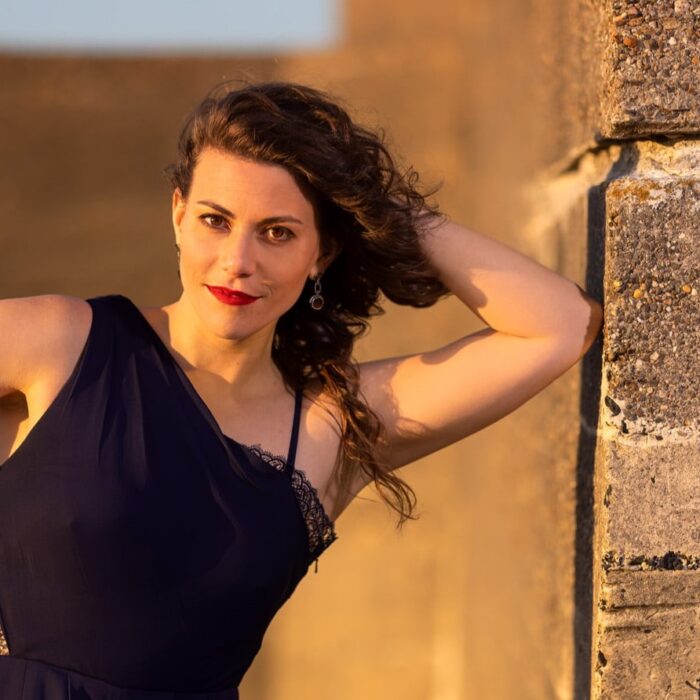
Q & A: Composer Lori Laitman on Creating Her Fifth Opera ‘Uncovered’
By David SalazarOn Nov. 16, City Lyric Opera will present the New York premiere of composer Lori Laitman and librettist Leah Lax’s “Uncovered.”
The opera, which premiered in March 2022 in Utah, is based on Lax’s memoir exploring her journey out of Hasidic Judaism to freedom as a gay woman.
The opera represents the fifth work in the artform for Laitman following such operas as “Come to Me in Dreams,” “The Scarlet Letter,” and “Ludlow.” Laitman recently spoke to OperaWire about the experience of creating “Uncovered” and her hopes for its New York premiere.
OperaWire: What inspired you about this story to become involved in this project?
Lori Laitman: I met Leah in 2015, online, in a small FB group for women composers and librettists. When her memoir was published, I bought the book, interested to learn more about Leah’s journey and the Hasidic community. I found the memoir to be excruciatingly honest, and the inherent drama of her story struck me as perfect for music.
So I contacted Leah and we met for coffee in NYC. Knowing of her prior works as a librettist, I asked if she might consider re-envisioning her memoir as a libretto, a huge creative undertaking. She “vetted” me by listening to my music and coming to Denver in 2016 to see Opera Colorado’s production of “The Scarlet Letter,” my opera with David Mason.
After that, she agreed. She sent me the libretto for the first scene, I completed the music for that scene in 2016, and on the strength of that scene, the opera was chosen as a finalist for the 2018 Pellicciotti Opera Composition Competition.
OW: What was the experience like of working with Leah Lax? How was working with her on this opera different from your previous experiences?
LL: The Leah characters in the opera (both Young and Older) are dramatizations of Leah’s real life. In my other operas, I relied on my imagination for the emotional subtext. In this case, I could check whether my intuitions were correct.
Often, I would write a passage of music and then call Leah to play and sing it to her over the phone. I would ask “is this how you felt?” — and if I didn’t quite capture the feeling she had experienced, I would rewrite the music, armed with this new and inside knowledge.
OW: What is the musical language of this opera and how did you come up with it? How did you arrive at an instrumentation of clarinet, violin, cello, and piano?
LL: I referenced traditional Jewish musical modes but did not use any existing melodies. For the opening scene, I did watch a lot of YouTube videos to get a sense of the music played and joy displayed in a Hasidic wedding — but then crafted my own more complex upbeat music. Everything flowed organically from these opening motifs. For example, in “The Mikvah Scene” (scene 2), the original wedding theme is slowed down and placed atop more dissonant harmonies with very liberal pedaling in the piano, thus creating a blurred sound world appropriate for a Mikvah, as Leah’s character communes with the “Voice of the Water.”
My process for composing any vocal music is the same: the words are paramount and guide me towards creating the most appropriate dramatic music. I begin with the vocal line, figuring out the best rhythms to honor the natural stresses of the words, and craft singable lines, which in turn enable the singers to most effectively deliver the words to the audience.
I use leitmotifs and word painting. I consider the combination of melody and words similar to two strands of DNA. Once combined they form a unique whole. But when separated, for me, the melody retains the imprint of the words. Especially in opera, a musical motif, which retains its inherent literal association even when played without the words, is a useful tool for giving insight into the psyche of a particular character or situation.
My harmonies and contrasting lines comment on the emotional content of the subtext, with very fluid changes to the tonal centers in order to match the varying moods of the text. My goal is to use every aspect of the music (orchestration, rhythm, texture, meter, silence, etc.) to create a musical web that examines and illuminates the text from various angles.
I start at the beginning and I compose until the end. Writing the last scene is always the biggest challenge, as one has to tie all the music threads together and often the musical material must appear in different juxtapositions.
The accompaniment, comprised of a small quartet of clarinet, violin, cello, and piano (the same instrumental quartet that I used in “Vedem,” my Holocaust-themed oratorio with David Mason — and also the same ensemble used by Messiaen for his “Quartet for the End of Time” — provided me with all the colors I needed. And the associations of violin and clarinet with historical Klezmer music also fit the nature of the story.
OW: What were some of the major challenges you had to overcome in creating “Uncovered?”
LL: I began the work in 2016, but busy with other commissions and frequent travel for performances, I was only able to work on the piece sporadically. I had written no more than two extra scenes when the pandemic hit. The enforced isolation of the pandemic allowed me the extended quiet time necessary to delve back into the work, revise it and finish it. I completed the work in 2020.
OW: The work premiered earlier this year with USU Opera Theatre. What did you learn from those initial performances about the work and how do you feel that this NY premiere will be different?
LL: It’s always good to see a piece “up on its feet.” I learned that a few spots needed editing and tightening. So I edited and tightened the music to make the drama more compact.
The NYC premiere will be the first with a professional cast and crew. The look of the set will be very different. For both productions, however, I am lucky to work with the genius stage director Beth Greenberg.
OW: What do you hope audiences will take away from this opera?
LL: I hope that the music transports the audience into Leah’s world. I hope everyone leaves with a better understanding that love is love, everyone is beautiful, and living a lie is not helpful to anyone.
OW: This is your fifth opera. How has your operatic language or approach to the art form developed since you made “Come to Me in Dreams?”
LL: My first opera, “Come to Me in Dreams” (2004) was created by David Bamberger, who was the General Director of Cleveland Opera. But it was really a staged narrative, as David strung together 15 of my songs to create a moving story about a Holocaust survivor. I have always considered my art songs to be miniature operas, so it was a thrilling discovery for me to see my songs work dramatically on stage.
“The Scarlet Letter” (2008) was my first full-length opera, and my first experience working with a librettist, the wonderful David Mason. After the student premiere with University of Central Arkansas, I worked for several years to revise the score, including multiple re-orchestrations, until the work’s professional premiere in 2016 with Opera Colorado.
In 2011, I started working on “Ludlow,” also with David Mason, based on his book about the 1914 Colorado mining town disaster and how America treats its immigrants. I wrote the first act (of 3) about a decade ago. Recently I released several of the first act’s arias on CDs, including “The Wind Sighs.” Called “elegiac and heartbreakingly beautiful” by Fanfare Magazine, this song opens Stephen Powell’s Grammy-nominated American Composers at Play CD.
“The Three Feathers” (2014) is my fairy tale opera with Dana Gioia, based on a story by the Brothers Grimm. This opera was commissioned by the Center for the Arts at VA Tech. My mandate was to write an opera that included roles for classical voices, musical theater voices and children. Three choruses of children portray the rats, bats and frogs of the Frog King’s Underworld. With its large cast of characters, a small chamber orchestra (19-24 players) and humor that can appeal to the youngest child as well as the oldest adult, it is the perfect opera for family holiday entertainment.
With each opera, my musical layering skills improved, so by the time I wrote Uncovered (2020), I was very comfortable having different characters sing at the same time, often expressing conflicting sentiments.
OW: What does the art form of opera mean to you?
LL: It takes such a blend of talent to make an opera — the librettist and the composer, of course, but also the singers, musicians, conductor, director, set designer, costume designer, lighting designer, creative team and producers. All of them must work together to bring a story to life on the stage. Not only is it an amazing emotional experience for the creators but also for the audience.
OW: Who are the opera composers that most inspire you and why?
LL: The opera composers that inspire me — any and all that truly love the voice and treat it with respect are the ones I love. (I really dislike when composers mistreat the voice or words.) I love fast paced dramatic stories, dramatic irony and great melodies. Verdi’s “Rigoletto” is one of my favorites and the use of music to reveal the horrific fact that the Duke is still alive is so chilling. The first opera I really loved was Monteverdi’s “Poppea” — I could listen to “Pur ti miro, Pur ti godo” forever for its sheer beauty. And Puccini is another hero for the interviewing of motifs and his beautiful vocal lines.
OW: What are some other future projects on the horizon? Do you know what your next opera will be?
LL: My next operatic endeavor will be to finish “Ludlow” (and if anyone is interested in commissioning this work, please contact me). The topic of how the US treats immigrants is sadly still extremely relevant.
During the pandemic, I started to make films of my art songs with Positive Note, a British company that specializes in making films about classical music. The first of these, “Sarong Song,” was released in the fall of 2022 and it is the second song of my cycle “The Soul Fox,” (2013) to a poem by my frequent collaborator David Mason. The cycle set Mason’s autobiographical poems to create a narrative about the upheaval in Dave’s life as his second marriage dissolved. This song seizes on the moment Dave from Colorado met Chrissy from Tasmania — and her mesmerizing effect on him, which later resulted in their marriage and his move to Tasmania.
Alternating between a superb performance of the lyrical music by mezzo-soprano Kitty Whately and pianist Simon Lepper and slow animation created from famed illustrator Ian Beck’s custom watercolors, this musical blending of the elements by director Jeremy Hamway-Bidgood creates a new kind of film — a hybrid presentation of classical song, poetry, and original art. More films with Positive Note are forthcoming.
I also hope to start work on my next solo CD (my 10th), and then I’d like to just play with my amazing grandchildren!


